The Power of Waiting: The Key to Supporting
Your Child’s Communication
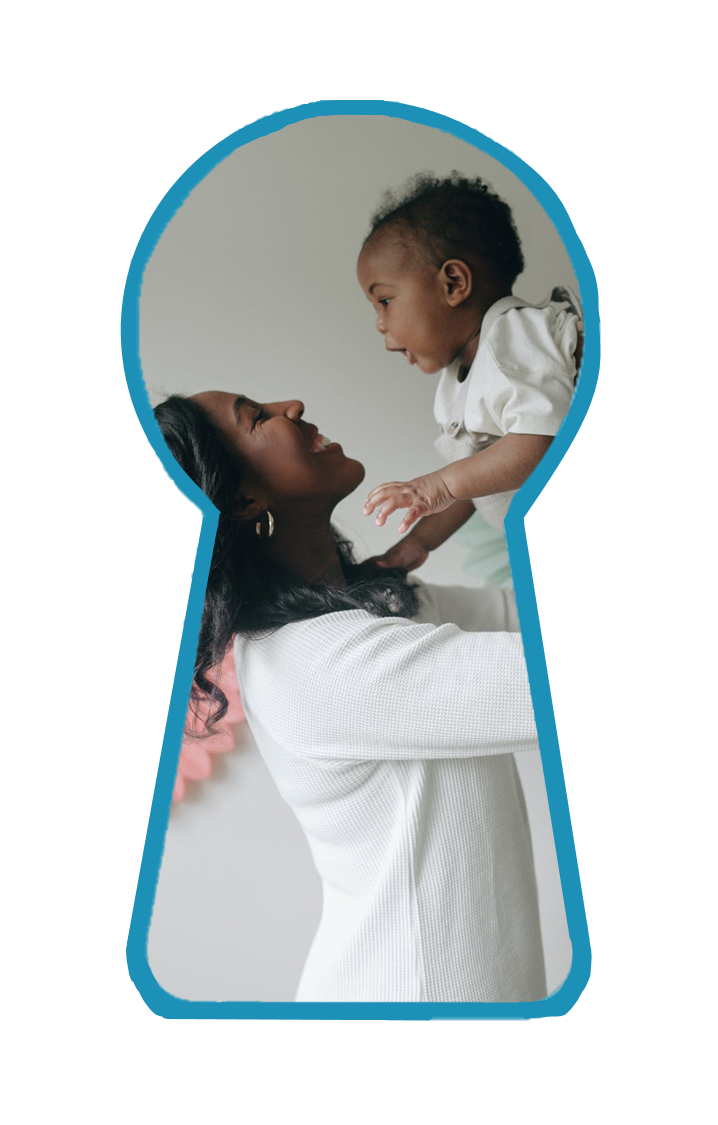
As a parent, you are helping your child learn communication skills in interactions throughout the day. So how can you make the most of the routines and activities you already do with your child to build their communication?
One of the most important things you can do to support your child’s communication development within your interactions is to…
wait.
Why is waiting so important?
Waiting lets your child take the lead and
start an interaction with you. Research shows that children are more motivated to stay in an interaction when you let them start the interaction, and then respond with interest to what they are communicating. This leads to longer back-and-forth interactions and more opportunities to build their communication skills.
How do you wait for your child to start the interaction?
Waiting is the most important part of a key Hanen strategy called
Observe, Wait and Listen™, or OWL™. Let’s take a closer look at how to use this strategy:
| OBSERVE |
Observing starts by getting face to face with your child. This means, being at the same physical level as your child, so you can:
- Connect and share moments together
- See what your child is interested in
- Notice how your child communicates
|
| WAIT |
Waiting expectantly lets your child know that they can start the interaction. When you wait expectantly, you:
- Stop talking
- Lean in towards your child
- Show your child you’re interested (e.g., use an encouraging facial expression)
Wait for up to 10 seconds for your child to start an interaction. If your child doesn’t start an interaction after 10 seconds, you can make a comment about what your child is doing, and then wait again. |
| LISTEN |
Listening lets your child know their message is important to you. It also helps you to:
- Tune-in to your child’s message
- Understand what your child is communicating
|
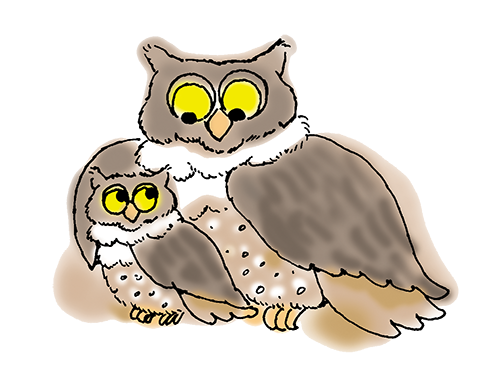 |
It may seem simple, but OWLing – and especially waiting – to let your child start the interaction is one of the most powerful things you can do to support your child’s communication. When you wait, the way your child may send a message will depend on their stage of communication. Read on to learn how to identify your child’s stage of communication. |
How do you identify your child’s stage of communication?
The Hanen Centre’s research-based
It Takes Two to Talk® parent program organizes children’s early communication development into four stages.
Each stage includes the reasons why your child communicates, how your child communicates, and what they understand. You can find more information about the stages of communication in the
It Takes Two to Talk® parent guidebook.
The defining feature of each stage is outlined below and will help you decide which stage of communication best describes your child’s current communication skills. Click on each stage to learn more:
- Discoverer Stage
- Your child is at the Discoverer Stage if they react in different ways (e.g., cry, smile, make sounds, move their body) to how they feel and what is happening around them, but do not yet communicate with a specific purpose in mind.
- Communicator Stage
- Your child is at the Communicator Stage if they communicate specific messages directly to you or others without using words (e.g., sending messages with facial expressions, sounds, looks, and/or gestures).
- First Words User Stage
- Your child is at the First Words User Stage if they intentionally use single spoken or signed words, or pictures to communicate.
- Combiner Stage
- Your child is at the Combiner Stage if they intentionally send messages using two to three spoken or signed words, or pictures at a time.
What are you waiting for?
Knowing your child’s stage of communication will tell you how your child might
take turns in interactions when you
Observe, Wait and Listen.
Choose your child’s stage of communication to learn how they might take turns when you
wait.
- Discoverer Stage
- What to expect when you’re waiting expectantly with a child at the Discoverer stage
Children at the Discoverer stage have not yet learned to send messages on purpose, but they do react to what’s happening around them in different ways. These reactions may be subtle and easy to miss. When you Observe, Wait and Listen, your child may:
- Look at you or something of interest
- Turn towards a sound or familiar voice
- Use facial expressions (e.g., smile, frown)
- Reach for something they want
- Turn away or push away something they don’t want
- Move their body (e.g., kick their legs or move their arms)
- Cry in different ways
- Make sounds (e.g., vowel sounds like “ooh” or “ahh”)
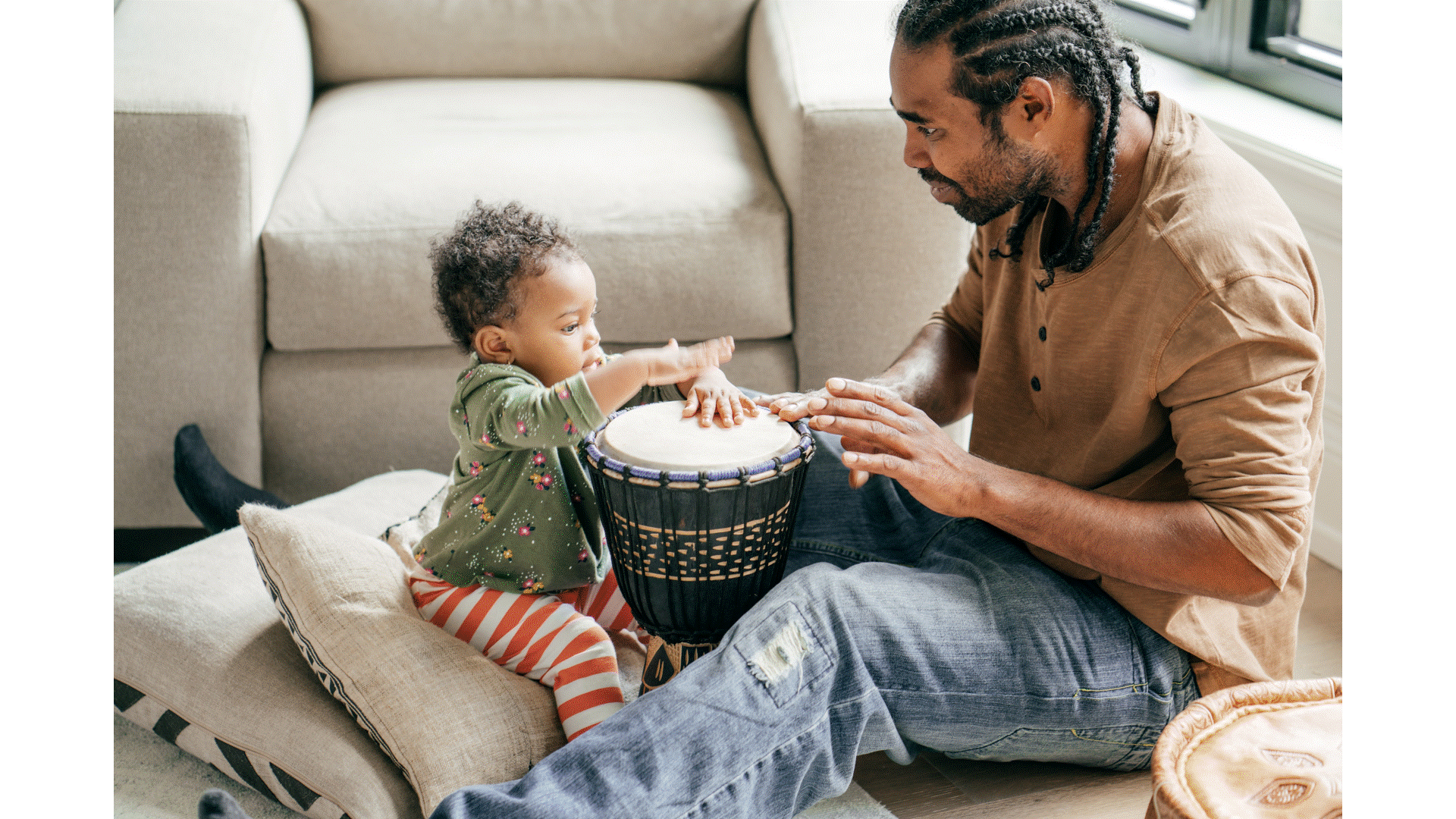 Once your child reacts in some way, respond immediately by saying something about what you think your child is interested in.
Once your child reacts in some way, respond immediately by saying something about what you think your child is interested in.
In this example, when Dad Observed, Waited and Listened, his child banged the drum.
Then, Dad responded by saying, “Bang bang! You’re making music!”
Responding promptly, as Dad does in this example, will help children at the Discoverer stage learn that they can send messages on purpose.
- Communicator Stage
- What to expect when you’re waiting expectantly with a child at the Communicator stage
Children at the Communicator stage send intentional messages using looks, sounds and/or gestures. When you Observe, Wait and Listen, your child may start an interaction by:
- Looking at you and drawing your attention to what they are interested in (e.g., looking back and forth between you and a toy)
- Using a variety of facial expressions (e.g., smiling, frowning)
- Pointing or using other gestures (e.g., waving, clapping, nodding)
- Reaching towards, giving or showing you something
- Using body movements (e.g., jumping to ask for a jumping game to continue)
- Making sounds like “ooh”, “ah”, or “da” or using a consistent sound that means something specific (e.g., “grr” to represent a bear)
- Occasionally imitating or using a single word
You may notice your child send a message using one of these ways, or by combining a number of these ways to communicate.
 Once your child takes a turn, respond immediately by doing or saying something about what your child has just communicated.
Once your child takes a turn, respond immediately by doing or saying something about what your child has just communicated.
In this example, when Mom Observed, Waited and Listened, her child dropped his tiger, put his arms up, looked at her and made an “ah” sound.
Then, Mom responded by saying, “Uh oh! Your tiger fell!”
Responding promptly to your child’s message will motivate them to stay in the interaction.
- First Words User Stage
- What to expect when you’re waiting expectantly with a child at the First Words User stage
Children at the First Words User stage send intentional messages primarily using single spoken or signed words, or pictures. Children at this stage may also continue to use looks, gestures and facial expressions to communicate. When you Observe, Wait and Listen, your child may start an interaction by:
- Using a single word*, which may or may not sound like the adult version (e.g., “nana” for “banana”)
- Using a word* and gesture or facial expression together (e.g., shaking their head “no” and saying “bed” to indicate they do not want to go to bed)
- Occasionally putting two words together (e.g., saying “up Mama” to ask to be picked up)
*Includes spoken or signed words, or pictures
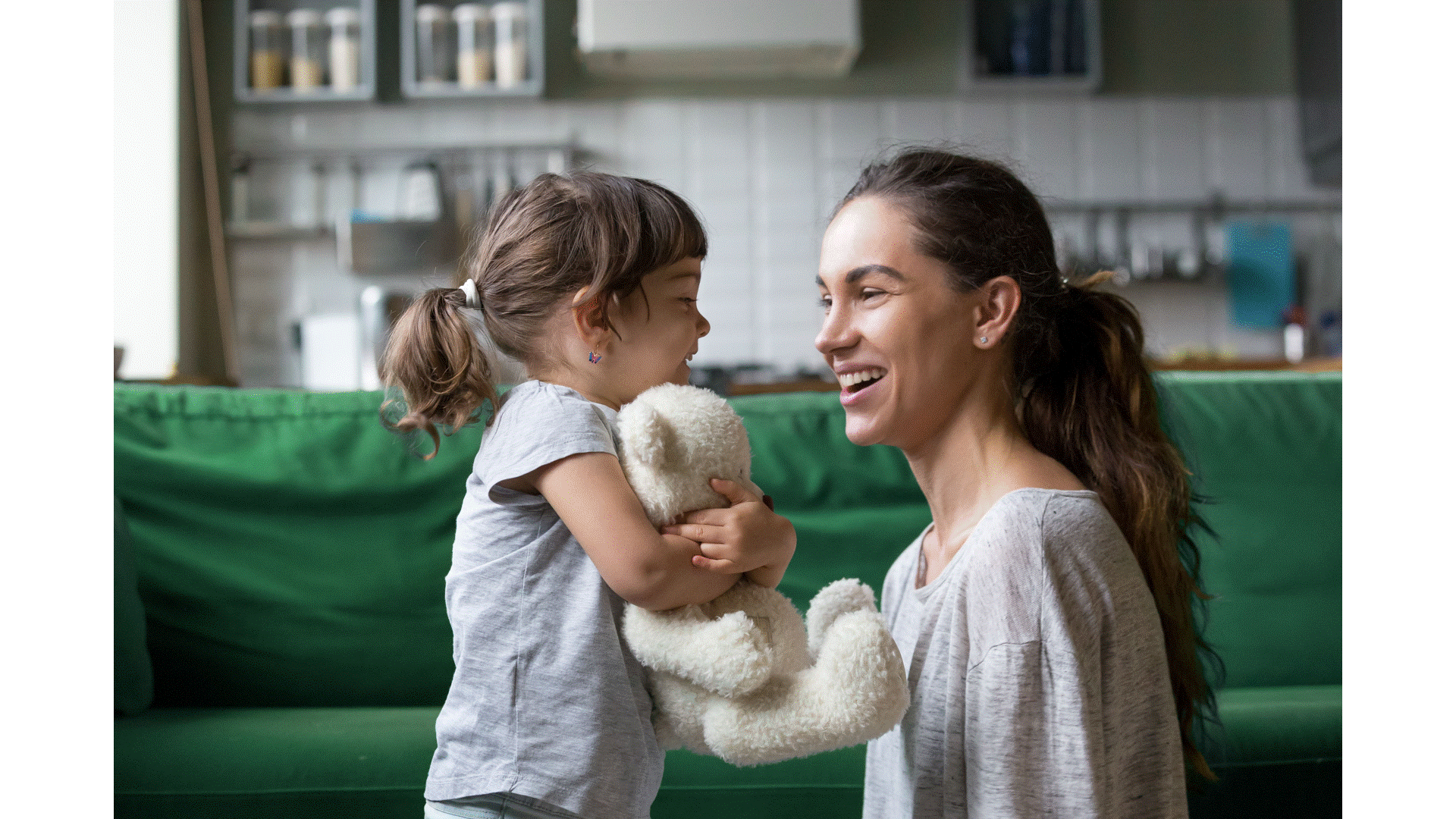 Once your child takes a turn, respond immediately by saying something about what your child has just communicated.
Once your child takes a turn, respond immediately by saying something about what your child has just communicated.
In this example, when Mom Observed, Waited and Listened, her child hugged her bear, looked at her and said “hug”.
Then, Mom responded by saying, “Aw, Teddy likes getting a hug!”
Responding promptly to your child’s message will motivate them to stay in the interaction.
- Combiner Stage
- What to expect when you’re waiting expectantly with a child at the Combiner stage
Children at the Combiner stage send intentional messages primarily using two or more spoken or signed words, or pictures together. Children at this stage may also continue to use looks, gestures, and facial expressions to communicate. When you Observe, Wait and Listen, your child may start the interaction by:
- Using two words* together (e.g., saying “ball gone” to tell you they lost their ball)
- Using two words* and a gesture or facial expression (e.g., pointing to the fridge and saying “want milk” to indicate they want something to drink)
- Occasionally putting three words together (e.g., saying “no want juice” to let you know they don’t want more juice)
*Includes spoken or signed words, or pictures
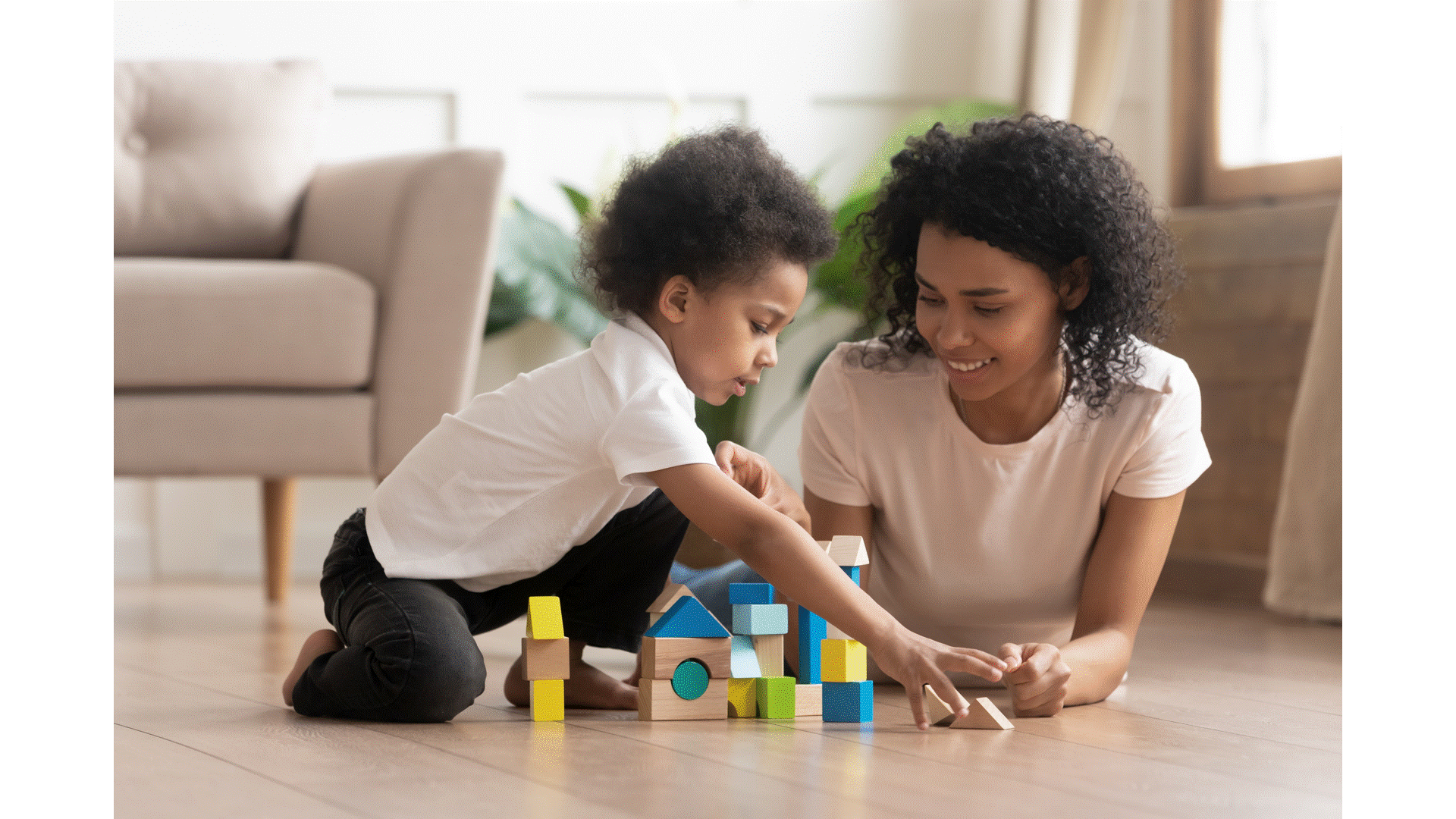 Once your child takes a turn, respond immediately by saying something about what your child has just communicated.
Once your child takes a turn, respond immediately by saying something about what your child has just communicated.
In this example, when Mom Observed, Waited and Listened, her child put a block on the tower and said, “Block on.”
Then, Mom responded by saying, “You put a block on the tower!”
Responding promptly to your child’s message will motivate them to stay in the interaction.
Your child learns best when they are
engaged in enjoyable back-and-forth interactions with
you, the most important people in their lives. Regardless of your child’s stage of communication,
waiting is an important strategy that encourages them to
start interactions with you. Once your child has started an interaction and you respond,
wait again to see what they do or say next. This will encourage your child to
stay in the interaction and create many opportunities for communication within your activities and routines.
More Information and Tips
| Explore the links below for more practical information to help you get started supporting your child’s communication. |
Hanen Resources
It Takes Two to Talk® guidebook
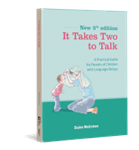
| The It Takes Two to Talk guidebook gives you research-based strategies for building your child’s language skills during enjoyable everyday interactions and activities. Lots of illustrated examples and checklists help you better understand your child’s stage of communication and the best ways to help them learn. |
Save 20% on the It Takes Two to Talk guidebook
until May 31st with code SLHM24 |
Hanen Programs
It Takes Two to Talk® Program
The It Takes Two to Talk program takes place either in person or online with a small group of parents and a Hanen Certified Speech-Language Pathologist (SLP). You learn strategies to help your child communicate throughout the day, and you have the chance to practice and discuss these strategies, as well as receive individual support from the SLP.
Watch the clip below to hear from parents about their experience at the program and how it impacted their interactions with their child. |
For professionals who work with young children with language delays:
e-Seminars
| Explore the following e-Seminars for tips to support parents to use responsive-interaction strategies to build early language skills: |
Save 30% on all language delay e-Seminars
until May 31st with code SLHMSEM24 |
It Takes Two to Talk® Workshop
| The It Takes Two to Talk workshop for SLP/Ts provides an evidence-based framework for coaching parents of young children with language delays to facilitate their child’s language development during everyday interactions and activities. You receive a license to offer the It Takes Two to Talk Program and to use It Takes Two to Talk materials in your 1–1 parent coaching sessions. |
Save $50 on the registration for any It Takes Two to Talk
workshop until May 31st with code SLHM50
|